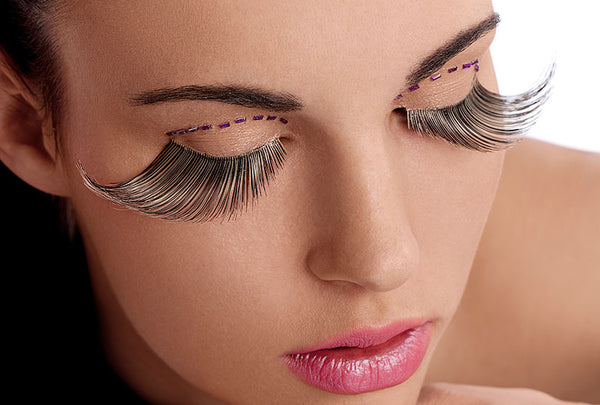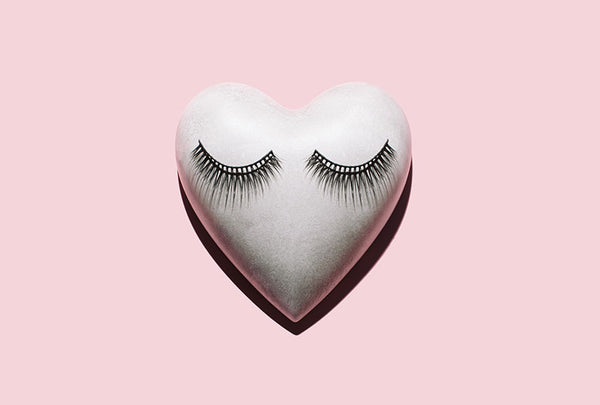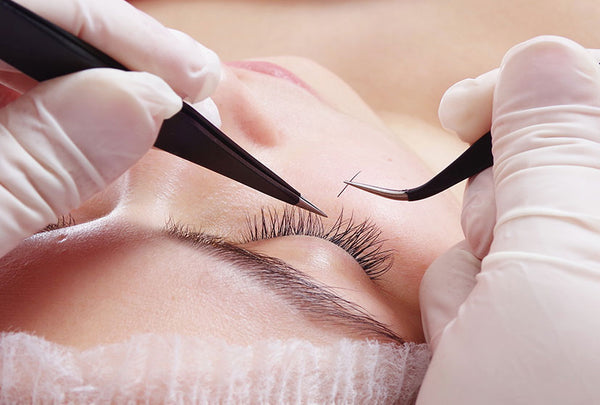What Are False Lashes Made of?

It has not always been fashionable to wear voluminous lashes. In fact, throughout the Middle Ages, fluttery lashes were a source of ridicule. The church at the time held the view that long lashes were wanton and encouraged sin, which led many women to pluck them off, making them vulnerable to debris, dirt, and infection. It is fortunate that big lashes have made a resounding comeback because they do in fact perform an important function.
False Lashes
One technique available nowadays to make lashes bigger and more dramatic is the use of false eyelashes. Falsies are not a recent creation, but they have evolved significantly from their forerunners. False eyelashes were first produced in the early 1900s and were glued to a strip of silk or even gauze using real human hair. The outcome was somewhat akin to modern fake eyelashes, though not as dependable. The parts were simple to separate and did not always produce the intended appearance. In fact, a writer said that one of the women appeared to be "recovering from a small explosion" when wearing the old type of falsies.
Inside a Lash
Keratin, a substance that the human body naturally produces, is what makes up eyelashes. They receive nutrients from the follicle and are rooted in the eyelid. The lash's structure resembles that of head hair from humans. About ten percent of lashes are water, while the majority are proteins. Although lashes are thought of as an aesthetic improvement, they have a very significant purpose.
They include collecting tear-producing sebaceous gland lubricating ducts. Additionally, lashes prevent dust and other irritants from entering the delicate eye structure. Different phases go through with lashes. There are three of these phases: the growing phase, which lasts roughly 45 days, the declination phase, during which the hair stops growing and lasts, on average, three weeks, and the shedding period, during which the hair sheds. The process starts over after the entire set of steps, and the hairs regenerate.
What are False Lashes Made of?
Artificial lashes normally come in three different varieties: synthetic, human hair, and mink fur. Rubber and other synthetic materials, including recyclable materials, are used to create synthetic eyelashes. Although they cost the least to buy, these lashes are frequently of lower quality. Because of their makeup, they frequently have a glossy, thick, and unnaturally curled lash appearance. It is advised that customers buy these lashes only once because they can harm the eyes permanently and make the lids droop more. Although there are higher quality synthetic lashes out now that appear a little more real, they are still inferior to other kinds of lashes.
The human hair lash is another variety of lash. These are the nicest you can get, and they closely resemble your own lash in appearance. Although these lashes are more expensive than some, especially synthetic ones, they are more pleasant, last longer, and, when properly applied, can blend in with your natural lashes. When kept properly in a dry, cool environment, human hair eyelashes can frequently be reused more than once.
Unsurprisingly, mink fur lashes are the costliest ones you can get. They are frequently manufactured by hand and are made of mink fur. Those who vouch for them claim that they are cozy, nicely frame the eyes, and appear to have feathery, natural lashes.



